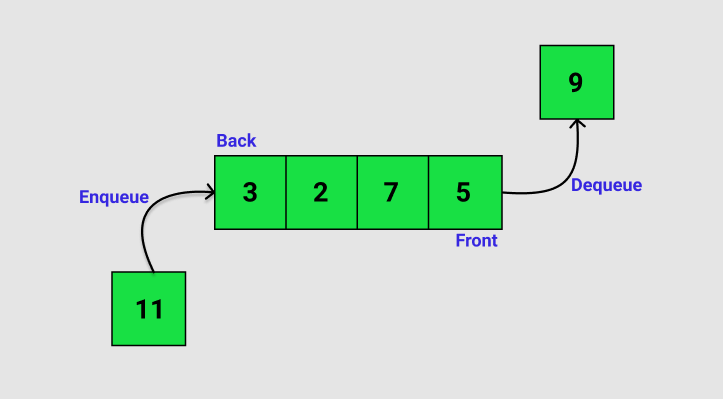


If you need a thread-safe implementation, consider using PriorityBlockingQueue. Please note that neither the PriorityQueue nor LinkedList implementations are thread-safe. ("Top Element After Remove:" +li.peek()) ("Extracting Top Element & Show: "+li.poll()) ("Top Element Before Remove:" +li.peek()) Printing the top element Before Remove
ENQUEUE AND DEQUEUE JAVA HOW TO
Let’s see how to create a queue object using this class. LinkedList is preferred over arrays or queues because they’re more dynamic, and it’s easy to insert and delete elements. The elements in a LinkedList are linked together using pointers and addresses. It is a linear data structure where elements are not stored in contiguous locations, but rather each element is its object with a data and addresses part. LinkedList is a class that implements the collection framework, which implements the linked list data structure. ("Top Element After Remove:" +obj.peek()) ("Extracting Top Element & Show: "+obj.poll()) Printing the top element and removing it That’s when PriorityQueue comes into play. A queue typically follows the First-In-First-Out algorithm, but sometimes elements in the queue need to be processed according to priority. The PriorityQueue class in the collection framework provides a way to process objects based on priority. The queue interface is designed to make it easier to implement queues. There are various types of queues, such as LinkedList, PriotityQueue, ArrayBlockingQueue, DelayQueue, LinkedBlockingQueue, and PriotityBlockingQueue. Several classes implement queues, including: In particular, it extends the iterable interface. The Java Queue interface extends the collection of interfaces. } Classes That Implement the Queue Interface However, the Queue also has its built-in iterator, which can go through the elements in the Queue. The most popular method is converting the queue into an array and using a for loop to traverse it. There are a few different ways to iterate through a Queue. If there are multiple objects that you want to remove, then you can use the poll() method. This will remove the first occurrence of the object. If you want to remove an element from a queue, you can use the remove() method. The PriorityQueue does not retain insertion order – instead, elements are stored based on priority order (ascending by default). To add an element to a queue, you can use the add() method. The Queue interface includes all the methods of the Collection interface because it is a sub-interface. Queue obj3 = new PriorityQueue() Methods Of Queue Priority Queue implementation of Queue To use Queue in Java, we must import the package.


 0 kommentar(er)
0 kommentar(er)
